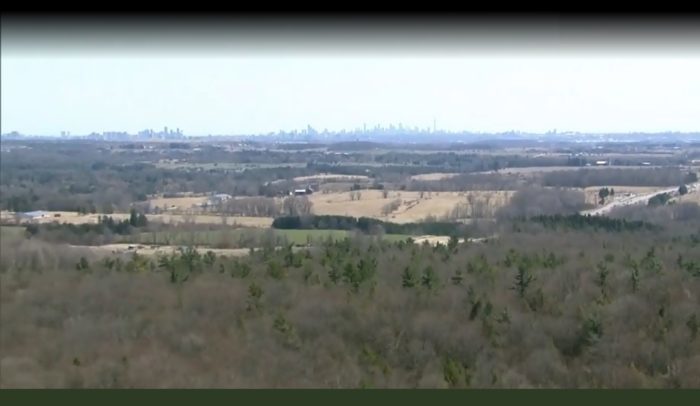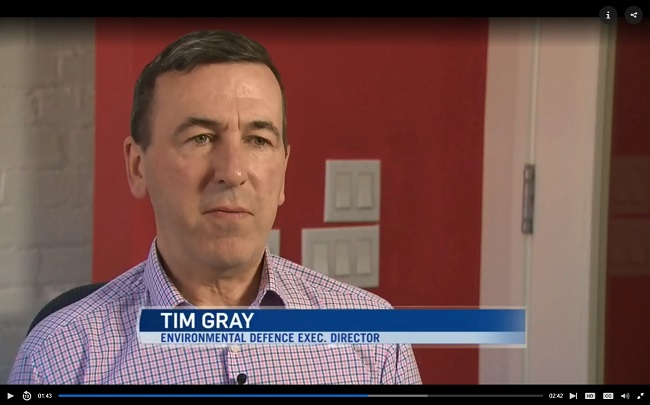Last week, a video was released showing Ontario’s PC Party leader Doug Ford promising to open up a “big chunk” of the Greenbelt to allow development on its protected areas, an idea he attributed to the “biggest developers in this country.”
Our Executive Director, Tim Gray responded in the news that this would have severe consequences and allow land speculators to build massive subdivisions, at immense profits, on farms, forests and natural areas currently protected in the Greenbelt.
Watch Tim Gray’s interview on CTV news.
Ontario’s PC Party leader Doug Ford later reversed his position. This is consistent with polls that suggest more than 89 per cent of Ontarians support the protection of the Greenbelt. Ontarians like you.
The good news is that now all parties support the Greenbelt and recognize its immense values. Thank you for your help in securing the future of farmland, forests and water systems in Ontario.
Over the last few months, many of you signed petitions supporting expansion of the Greenbelt. Your voice matters now more than ever. We encourage you to ask candidates questions on their views during the upcoming provincial and municipal elections.
It’s time to set the record straight.
The Greenbelt does not constrain housing supply or cause high house prices. In fact, municipal data shows that there is enough land available to provide for housing development within existing Greater Toronto and Hamilton Area urban boundaries until 2031.
The best way to address housing prices and supply in our region is by directing growth to existing urban areas, limiting sprawl, and building different kinds of affordable homes close to transit.
Read our latest blog highlighting 7 facts about the Greenbelt and what really impacts housing prices in the Greater Toronto and Hamilton Area.
Thank you,

Susan Lloyd Swail
Livable Communities, Senior Manager


UPDATE NOV 2022- Dissecting the controversial Bill 23
Ontario, and Canada, are currently in the middle of a housing crisis.
The crisis was caused by supply and demand problems, supply chain issues and wide variations in interest rates.
The solution from the Ontario government was Bill 23, the Build More Homes Faster Act. The goal of this bold legislation is to build 1.5 million homes in 10 years. The problem is along the way it removes power from conservation authorities, imposes quotas for home construction on municipalities, amendments to the Ontario Wetland Evaluation system, Planning Act changes, removal of areas from the Greenbelt and could actually increase costs to municipalities.
The bill takes away the ability of municipalities to enter into agreements with conservation authorities for review and comments on development applications. Municipal staff, though, generally don’t have the expertise to provide technical advice on natural hazards to avoid flooding, erosion, and drought impacts. More importantly, the legislation could impact the need for development permits in areas related to flooding, which is one of the reasons conservation authorities were formed.
Another contentious Bill 23 issue has been the proposal to remove 7,400 acres from the Greenbelt. Many constituents are not buying the government’s official line that Greenbelt lands are needed for housing. Many are arguing there is already more greenfield land already allocated for development and still sitting unbuilt than what is required to meet the province’s long range housing goals.
Any time municipalities gain additional responsibilities, or are no longer able to use contractors, it comes at a cost. Many municipalities have written the government objecting to many of the provisions of Bill 23. The City of London, for instance, estimates the impacts of Bill 23 at more than $97 million over five years. I haven’t heard any local figures yet, but imagine they are crunching numbers.
One of my primary concerns is the loss of farmland to housing. Keeping farmland as farmland to feed ourselves is critical. It’s a “no-brainer” so to speak. The government continues to talk about newcomers making Ontario home but if we can’t feed them, it becomes a moot point. We lose nearly 320 acres of arable land daily to development—if there’s one thing we can’t make more of, it’s farm land.
All that being said, I get we need housing.
Years of municipal and provincial red tape left sensible housing development moving at a snail’s pace. The pressure to build housing from the Greater Toronto Area can’t be denied. That pressure is being felt all the way to Haldimand-Norfolk.
From my work at Queen’s Park in Toronto, I have been able to see opportunities to build more livable housing right in the city of Toronto. My Toronto staff have pointed out vast areas of the city where two-story non-historic buildings run for kilometres and could be replaced with European-style five storey buildings with street-level retail.
Everything in Bill 23 isn’t bad. It does tackle some red tape in the Planning Act that could be streamlined. It does recognize there is a housing problem, even though it went too far to tackle it.
There’s a lot to unpack with Bill 23. But rest assured, I will continue to press the government to find ways to build homes while protecting our precious farmland.
Bobbi Ann Brady is the MPP for Haldimand-Norfolk.